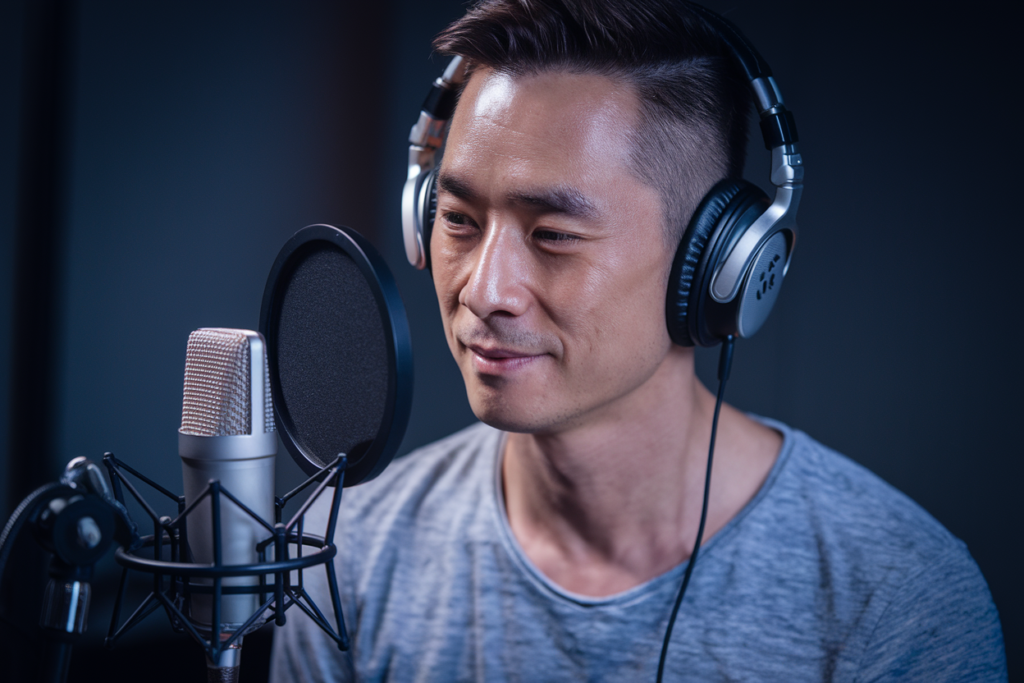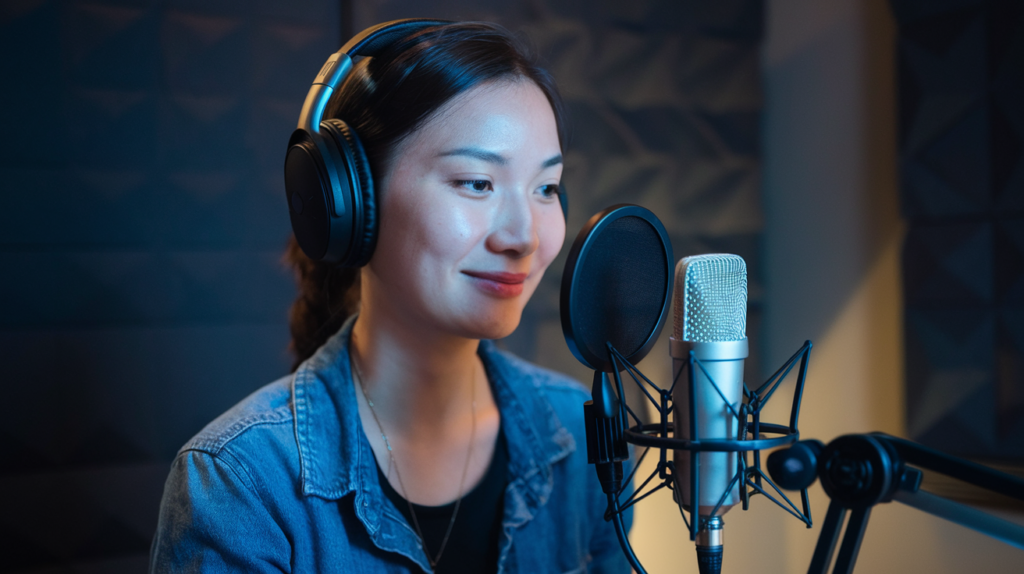Key Takeaways
- Understanding Synchronization: Effective synchronization between voiceovers and visuals is crucial for enhancing viewer engagement and ensuring clear messaging.
- Challenges with Chinese Voiceovers: Unique linguistic and cultural nuances in Chinese require careful attention to inflection, pacing, and lip movement alignment during synchronization.
- Pre-Production Importance: Analyzing visuals and scripts in pre-production helps establish timing, pacing, and emotional cues essential for effective voiceover delivery.
- Selecting the Right Talent: Choosing culturally aware voice talent who can adapt their style enhances project quality, ensuring authentic delivery that resonates with audiences.
- Technical Considerations: Utilize suitable audio editing software and techniques like timecodes and dynamic pacing adjustments to achieve perfect lip sync with visual content.
- Quality Control Measures: Implement regular reviews and feedback loops throughout the project to refine alignment between audio and visuals before final approval.
Ever struggled to get your Chinese voiceovers perfectly synced with the visuals? You’re not alone. Many content creators face this challenge, and getting it right can make or break your project.
Understanding Voiceover Synchronization
Achieving effective synchronization between voiceovers and visuals is crucial in video production. This alignment enhances viewer engagement, ensuring that your message resonates clearly.
Importance of Voiceover in Video Production
Voiceovers bring a project to life, adding depth and emotion to the visuals. They act as a narrative tool that guides viewers through the content while establishing tone and setting mood. A well-executed voiceover can elevate storytelling, making it more impactful and memorable. Whether you’re creating commercials, documentaries, or educational videos, quality voiceover talent ensures your audience connects with the material on a deeper level.
Challenges Specific to Chinese Voiceovers
Synchronizing Chinese voiceovers presents unique challenges due to linguistic differences and cultural nuances. The tonal nature of the language requires careful consideration of inflection and pacing to maintain natural flow. Additionally, matching lip movements with the audio can be complex; dialogue often needs adjustments for timing without losing meaning or emotional impact. By understanding these challenges upfront, you can streamline the process and achieve better results in your projects involving Chinese voice talent.
Best Practices for Syncing Chinese Voiceovers
Achieving seamless synchronization between Chinese voiceovers and visuals can elevate your project significantly. Here are some best practices to consider.
Pre-Production Considerations
Understand the importance of pre-production in the syncing process. Start by analyzing your visuals and script. Focus on timing, pacing, and emotional cues within the content. You want your voiceover to reflect these elements accurately. Additionally, prepare a detailed storyboard that outlines key moments where synchronizing is crucial. This approach helps ensure clarity when working with voice talent later on.
Script Preparation Techniques
Script preparation plays a vital role in effective synchronization. Use concise language that matches the tone of the visuals while considering cultural nuances specific to Chinese audiences. Break down long sentences into manageable phrases for easier delivery by the voice actor, enhancing natural flow during recording sessions. Incorporate notes about inflection and emotion in your script; this helps guide voice artists in conveying your message authentically.
Selecting the Right Voice Talent
Choosing suitable voice talent can make or break your project’s success. Look for a voice artist who not only speaks Mandarin fluently but also understands cultural subtleties inherent to different regions of China. Evaluate potential candidates’ demos carefully—focus on their ability to adapt their style according to your project’s needs, whether that’s energetic or calm narration. Collaborating with experienced professionals ensures they grasp both linguistic intricacies and emotional depth required for high-quality Chinese voiceovers.
Technical Aspects of Synchronization
Achieving seamless synchronization between Chinese voiceovers and visuals involves several technical considerations that can significantly impact viewer experience. Understanding these elements enhances the overall quality of your projects.
Audio Editing Software Recommendations
Select audio editing software that meets your needs for syncing voiceovers effectively. Popular options include:
- Adobe Audition: Offers advanced features for precise audio manipulation, including time stretching and pitch shifting.
- Audacity: A free, open-source tool that’s user-friendly and suitable for basic editing tasks.
- Pro Tools: Known in the industry for its powerful capabilities, making it ideal for complex projects requiring high-quality output.
Each option provides different functionalities to help you align voiceover tracks with visual components accurately.
Techniques for Achieving Perfect Lip Sync
Perfect lip sync is crucial when integrating Chinese voiceovers with video content. Consider these techniques:
- Use a Timecode: Align audio cues with specific frames using timecodes to maintain accurate timing throughout the project.
- Watch the Visuals Repeatedly: Play videos multiple times while listening to the voiceover. This practice helps identify misalignments early on.
- Adjust Pacing Dynamically: Modify the speed of delivery during recording to match visual actions better; sometimes, slower or faster speech conveys emotions more effectively.
These methods ensure your audience connects with both spoken words and visual expressions seamlessly.
Quality Control and Review
Quality control is essential for ensuring successful synchronization of Chinese voiceovers with visuals. Engaging viewers requires attention to detail throughout the process. Regular reviews help catch discrepancies early, making it easier to achieve that perfect match between audio and visuals.
Importance of Feedback Loops
Feedback loops provide vital insights during the synchronization process. Involving multiple stakeholders—such as directors, editors, and voice artists—ensures diverse perspectives on how well the voiceover aligns with the content. Frequent check-ins offer opportunities to refine pacing and tone, leading to a cohesive final product. Consider setting up scheduled reviews at various stages; this approach fosters collaboration and supports creative input from everyone involved in the project.
Final Approval Processes
Implementing a clear final approval process streamlines your project before release. This stage involves gathering all components—from visuals to audio—and assessing them against original goals. Ensure that you confirm alignment on emotional tone, pacing, and clarity with your voice talent’s performance. Utilize a checklist covering key elements like timing accuracy, pronunciation precision, and overall coherence with visuals. Having designated approvers can expedite decision-making while maintaining quality standards across all aspects of production.
Conclusion
Achieving seamless synchronization of Chinese voiceovers with visuals is vital for engaging your audience. By implementing best practices such as thorough script preparation and meticulous storyboarding, you can enhance the overall quality of your content.
Remember to choose voice talent who not only understands the language but also resonates with cultural nuances. Utilize reliable audio editing software and maintain a diligent review process to catch any discrepancies early on.
With these strategies in place, you’ll create a more immersive experience that captures your audience’s attention and conveys your message effectively. Focus on continuous improvement through feedback loops to refine each project further, ensuring that every element aligns harmoniously.
Frequently Asked Questions
What are the key challenges in synchronizing Chinese voiceovers with visuals?
Achieving perfect synchronization between Chinese voiceovers and visuals involves addressing linguistic differences, cultural nuances, and aligning inflection, pacing, and lip movements. These elements require careful attention to ensure that the message resonates clearly with viewers.
Why is pre-production important for syncing Chinese voiceovers?
Pre-production allows content creators to analyze visuals and scripts for timing and emotional cues. It helps in preparing a detailed storyboard that clarifies synchronization points, ensuring effective communication between audio and visual elements throughout the project.
How can script preparation improve voiceover synchronization?
Using concise language that reflects visuals is crucial for script preparation. Breaking down long sentences aids in more natural delivery, while incorporating cultural nuances enhances the clarity of the message during synchronization.
What should I look for when selecting voice talent for Chinese voiceovers?
Choose voice artists who are fluent in Mandarin and understand regional cultural subtleties. This ensures high-quality voiceovers that capture both linguistic intricacies and emotional depth essential for effective viewer engagement.
Which audio editing software is recommended for synchronization projects?
Popular audio editing software includes Adobe Audition, Audacity, and Pro Tools. These tools enhance audio quality and provide features necessary for achieving precise synchronization between voiceovers and visual elements.
How can I achieve perfect lip sync during recordings?
Use timecodes to align audio cues with specific frames in your visuals. Regularly watch footage to identify misalignments, adjusting pacing dynamically during recording to match visual actions closely improves overall synchronization quality.
Why is quality control important in the synchronization process?
Regular reviews help catch discrepancies early on by assessing alignment between audio and visuals. Involving multiple stakeholders like directors and editors fosters feedback loops that refine tone and pacing, resulting in a cohesive final product.
What does the final approval process entail for synchronized projects?
The final approval checks all components against original goals to confirm alignment on emotional tone, pacing, clarity, and overall quality standards across production. Utilizing checklists aids in maintaining consistency before project completion.







